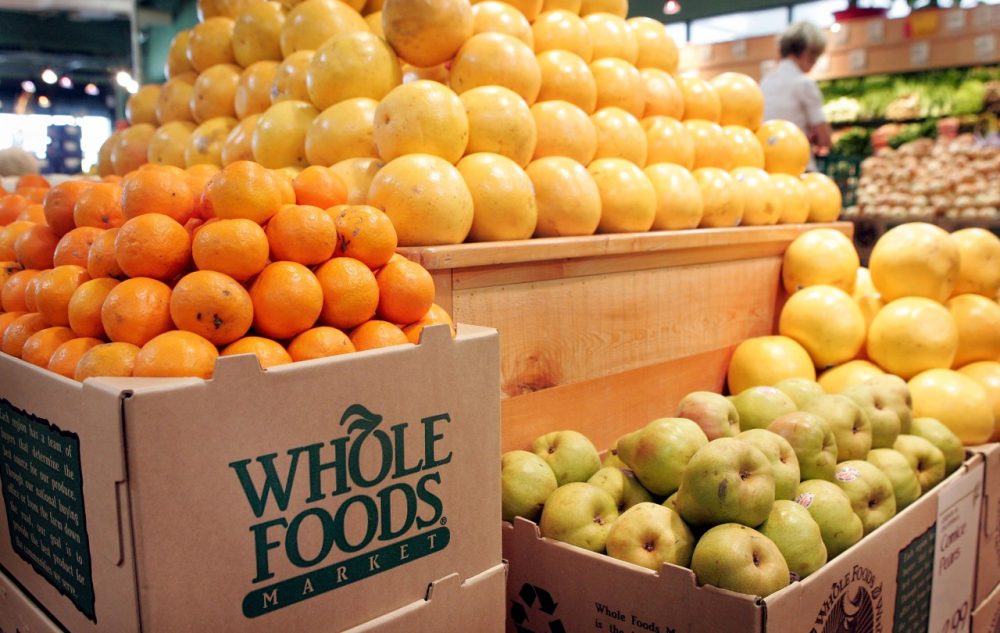Advertisement
Commentary
Dear Jeff Bezos, Please Help Save My Patients' Lives By Cutting Whole Foods Prices

I never considered my neighborhood to be a "food desert," a place where it's difficult to find fresh, quality food. I live in Cambridge, Massachusetts, walking distance from two Whole Foods markets.
Though I don’t much enjoy shopping, I admit that I find perusing the aisles of beautiful blueberries, yogurt and organic meat downright pleasant. On the wall behind the cash register is a picture of a woman and child in a field, with the slogan “Values Matter” framing their faces. As I read it, not only am I healthier for shopping at this store, I’m just better in general.
But recently, as a result of talking with the patients I treat as a primary care physician, my organic blueberries come with a topping of guilt and concern about what my high-end groceries mean for the low-income people who live near Whole Foods markets.
For them, my neighborhood is what I would call a “food desert of plenty,” with plenty of healthy foods in walking distance but economically out of reach.
Kate, a primary care patient in Cambridge, made this problem clear to me when she explained why she stopped cooking. She had recently gotten public housing close to Cambridge Hospital, which made her medical care easier, but she was now too far from Market Basket, where she had previously done a good job of buying healthy food to cook at home.
Lugging an oxygen tank behind her, Kate only had enough breath to get to the Whole Foods. Living on public assistance, however, this was not an option: their prices are on average nearly 50 percent higher than other supermarkets.
She now had to rely on rides to Market Basket from friends, and her best bet was to bulk up on cheap, calorie-dense food. Her produce purchases dropped, her weight increased and her difficulty walking became even worse.
With last week's news that Amazon would acquire Whole Foods for nearly $14 billion, much of the focus has been on how retail is evolving. But there have also been reports that Amazon would cut the high prices that have earned Whole Foods the widespread nickname "Whole Paycheck."
My great hope is that Amazon chief Jeff Bezos, who recently signaled his intention to use his vast wealth for philanthropic endeavors, will re-engineer Whole Foods in ways that will attack food inequality across the country.
Rising food inequality in America means that the poorest in America are actually eating worse diets than they were at the beginning of the century, even as the overall diet of Americans improves. And make no mistake, poor diets kill. According to a recent article in JAMA, at least 318,000 American deaths each year are linked to poor diet.
Advertisement
Obesity, diabetes and heart disease, while a problem for the whole country, are particularly an issue for the poor. No wonder, when the worst diets cost just $3.52 a day, while the healthiest cost $36.32 – with the healthiest shoppers choosing Whole Foods.
“Whole Foods has been promoting an elitist, segregated approach,” said Adam Drewnowski, director of the Center for Public Health Nutrition at the University of Washington’s School of Public Health, in an interview.
But when Amazon takes over, it could democratize access to healthy food, he said, and even nudge consumers to healthier choices.
“Amazon has more information on each individual customer than any grocery store chain ever could. They know where you live, what your preferences are,” he explained. They could use that data to address the “social disparities that lead some people to eat junk food and others to buy organic salmon at Alice Waters’ restaurant.”
How? Maybe the next time you open Amazon.com, the website could suggest healthy foods for your shopping cart. Maybe it could even discount them. More importantly, it knows where you live and what food is available there; it could lower prices in places where affordable healthy food is hard to access.
In contrast, in a worst-case scenario, the Amazon/Whole Foods amalgam could widen the gap in food quality, Drewnowski cautioned, with Amazon pushing more junk food options in neighborhoods where it is already prevalent, and using Whole Foods to distribute high-quality food only in hyper-gentrified neighborhoods like mine. Moreover, it could limit delivery in poorer neighborhoods.
In other words, the coming Whole Foods/Amazon behemoth could change food distribution in America radically for the better, or the worse.
Maybe my patient, Kate, will find her options limited even further. Or maybe Whole Foods will become more accessible to people like her, and we can wander the produce aisle together.